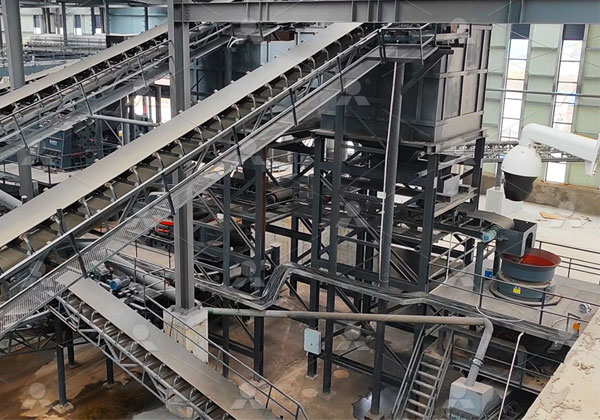Copper ore dressing equipment configuration
Copper is one of the most important industrial metals in the world, widely used in electrical wiring, plumbing, and many other applications. The extraction of copper from its ore involves a complex process called ore dressing or beneficiation, where the raw ore is crushed, ground, and processed to separate valuable copper minerals from the gangue (waste rock). Efficient copper ore dressing requires a well-planned configuration of equipment to maximize recovery and minimize costs.
Overview of Copper Ore Dressing
Copper ore dressing generally involves several stages:
-
Crushing
-
Grinding
-
Concentration (beneficiation)
-
Dewatering
Each stage uses specific equipment, carefully selected and configured to match the properties of the ore and the production requirements.

1. Crushing Equipment
The primary goal of crushing is to reduce the size of the copper ore to make it manageable for further processing.
-
Jaw Crusher: Usually the first stage crusher, used for coarse crushing. It has a simple structure and reliable operation.
-
Cone Crusher: Used for secondary crushing, cone crushers provide finer particle size and higher crushing efficiency.
-
Impact Crusher: Sometimes used to improve the shape of the crushed material or for softer ores.
Configuration Tip:
Typically, a combination of jaw crusher + cone crusher is common for copper ore crushing lines, with the jaw crusher handling large blocks and the cone crusher refining the output size.
2. Grinding Equipment
Grinding further reduces ore particle size to liberate copper minerals from the surrounding waste.
-
Ball Mill: Most common grinding equipment that uses steel balls to grind ore in a rotating cylinder.
-
Vertical Roller Mill: High-efficiency grinding, often used in fine grinding or regrinding processes.
Configuration Tip:
A ball mill is often combined with a rod mill in series or used alone depending on ore hardness and desired fineness.
3. Ore Concentration Equipment
The main objective is to concentrate copper minerals, increasing their grade while reducing waste.
Common equipment includes:
-
Flotation Machine
The most widely used copper ore beneficiation method is flotation, where chemicals and air bubbles separate copper minerals. Flotation cells or machines come in various sizes and configurations (mechanical, column cells). -
Magnetic Separator
Sometimes used if the ore contains magnetic minerals to separate them before flotation. -
Gravity Separation Equipment
Occasionally used if copper minerals have a significant density difference from gangue, e.g., shaking tables or spiral classifiers.
Configuration Tip:
Flotation machines in series with staged chemical dosing ensure the best separation effect. Magnetic separation or gravity methods are used as pre-concentration or cleanup steps.
4. Dewatering Equipment
After concentration, the copper concentrate must be dewatered for drying, transportation, or further processing.
-
Thickener
Used to concentrate the slurry and recycle water. -
Filter Press
Removes most water, producing dry concentrate cakes. -
Vacuum Filters or Rotary Drum Filters
Alternative equipment depending on scale and moisture requirements.
Configuration Tip:
Thickener combined with filter press is a common dewatering configuration to achieve low moisture content.
Sample Equipment Flow Configuration
A typical copper ore dressing plant configuration might be:
Jaw Crusher → Cone Crusher → Ball Mill → Flotation Machine → Thickener → Filter Press
For ores with special characteristics, the configuration can be adapted to include magnetic separators, rod mills, or additional grinding and flotation stages.
Factors Influencing Equipment Configuration
-
Ore Properties: Hardness, size, mineralogy, and impurities affect equipment choice.
-
Capacity Requirements: The tonnage of ore to be processed daily.
-
Recovery and Grade Targets: Desired copper content in the concentrate.
-
Economic Factors: Budget, operational costs, and energy consumption.
Proper configuration of copper ore dressing equipment is vital for efficient, economical, and environmentally responsible copper production. By understanding the ore characteristics and process requirements, engineers can design a customized flow sheet combining crushing, grinding, concentration, and dewatering equipment to maximize copper recovery and quality.
